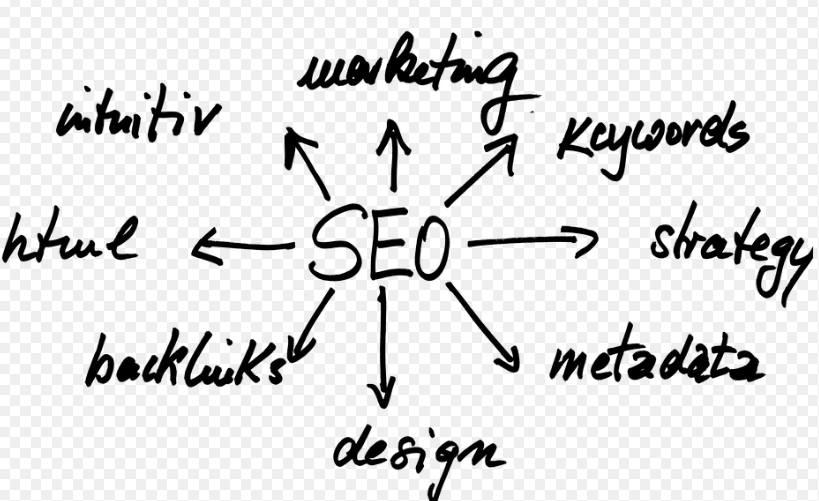
While designing a new content marketing roadmap for a website, the first thing that strikes our mind is how to boost the search engine ranking and drive the right traffic.
To make your website rank higher, the right SEO and content strategies play an essential role, and that’s why building relevant links holds significant relevance. There are many ways to make links, but contextual link building offers maximum returns while boosting the site’s visibility.
If you hear the term “contextual link building” for the first time, you have come to the right site. This post will explain contextual links and the best strategies for getting links from higher sites that will amp up your online business.
What is Contextual Link Building?

Picture credit- https://pixabay.com/illustrations/search-engine-optimization-seo-1359430/
The term ‘contextual link‘ refers to a link within the body of the text that directs the audience to another link or site in the context of the place they are currently reading.
Brands and online businesses often include contextual links in their blogs, articles, and website pages to prove authentication and pitch the right call to action.
Contextual link building is earning links from verified sites and providing resources to other websites. As the word suggests, ‘contextual’ means the relevancy of an idea, statement, or topic.
Since the links you generate within the blog are in the context of what you are talking about, it is known as contextual link.
Strategies to Build Successful Contextual Links
1. Guest Blogging
Guest blogging is about writing and publishing content on someone else’s website or platform.
It holds significant importance in building new relationships, exposing the brand to a new audience, driving the right traffic to the website, and building SEO-boosting backlinks.
Writing blog articles for authoritative sites increases the website’s credibility and establishes authority online.
To get started, you can use a backlink search tool to track the competitor’s actions, look through what kind of blogs they publish and add them to your list.
Once you have added the names of relevant sites, you can contact them to see if you can get a guest post. Avoid approaching the sites that ask for paid articles.
Mention why you are reaching out to them and your article ideas. You can use mediums like email and social media platforms, which are highly responsive.
2. Creating a Roadmap for Engaging Content

Picture credit- https://pixabay.com/illustrations/content-marketing-website-web-seo-3679757/
Whether you are working in a b2b business or b2c niche, building an engaging and informative content strategy is challenging for every content marketer.
Creating high-quality links is the first key to building contextual links, which is only possible if you work on your content strategy.
Creating content full of relevant information and demonstrating your brand expertise helps build trust and credibility.
Curate thought-provoking articles, convey a profound message, and engage the audience. This will create brand awareness, attract new clients and convert leads into conversions.
3. Look for Editorial Links
Editorial links are not just ordinary links; they are created because of a site that follows the latest content strategy and marketing techniques.
These are relevant links that any website will organically attract because of their great content. They are neither paid nor requested for.
Any website owner can earn editorial links from reliable sources by upgrading the content on their site that is valuable and shareworthy.
To attract contextual editorial backlinks, you can follow below given quick tips.
- Create content on the trending topics in your niche.
- Analyze your competitor’s blog section and build unique strategies to counter their weaknesses.
- Regularly update your content with new ideas and in-depth research and add infographic information to make it look reader friendly.
4. Create Contextual Links Using Broken Links
Another opportunity to avail yourself of high-quality backlinks is through broken backlinks from authoritative sites to your competitor’s site.
You can easily find such broken links by carrying out competitors’ backlink analysis using SEO tools such as HREFS.
Find all the broken links from your authoritative websites where you wish to fetch the contextual link.
Next, reach out to the prospective site owners and inform them about the broken links. You can replace the broken connection with the relevant site if they get convinced.
However, make sure that the contextual link should provide relevant information. If no relevant web pages are available, you can create one before contacting the target site.
5. Find Interview Opportunities
Giving or taking interviews is another effective way to earn contextual backlinks. But how to land such interviews?
You can do your research to find out if brands from your niche have conducted any interviews. Note the crucial points, study their audience, and shortlist the websites you want to approach.
Next, pitch your ideas to those site owners and propose a discussion on why you want to conduct this interview and what the agenda of this collaboration will be.
Working with complementary brands to create YouTube videos, interviews, or webinars helps with cross-promotional activities and building contextual links.
This kind of cross-promotional activity gives opportunities to both parties to reshare the content on each other’s website and drive traffic from the other end.
6. Social Media Influencer Marketing

Picture credits: https://pixabay.com/illustrations/profession-work-marketing-research-6871671/
Influencer marketing is a booming industry in 2023 and one of the emerging sources to gain high-quality links organically.
When you collaborate with any influencer, they promote your products on their websites and social media platforms. This action results in better backlinks for your website and drives more traffic.
Influencers with many followers may discuss your brand, product, or service and get featured on their social media handles. The brand mention provides a contextual link for your website and boosts organic traffic, search ranking, and sales.
While approaching any influencer, always confirm the engagement rate of their social media platforms and whether they belong to the required niche or not.
Best Practices to Build Contextual Links
1. Using Main Key Phrases as Anchor Text
While writing content, include the primary key phrases for the anchor texts.
It will help search engines decode the relevance of the linked URL and optimize the anchor text to the fullest.
As a result, it will help authenticate the page you are linking to and avoid keyword stuffing. The flow should be informative, and the content should always have a purpose to serve.
2. Use Long Tail Phrases
While building contextual links, avoid stuffing keywords & phrases as it looks enforced and is not accepted by search engine algorithms.
Instead, use long descriptive phrases that include the relevant keywords and look natural while reading.
For the sake of adding a link in the blog or article, only add something forcefully that may look relevant, as these can do more harm than benefit. Additional information in the link should be related to the blog post’s topic.
3. Link to Authoritative Sources
To rank your blogs and articles, all that matters is getting one single link from a trusted source instead of inserting unnecessary links from low-ranking sites.
To measure the website’s credibility as a link, refer to the website’s domain authority (DA) and domain metrics (DM).
It’s always safe to identify which website has optimized content to increase the probability of content getting featured.
Top Benefits of Building Contextual Links
Contextual link building is an effective SEO strategy that comes with a unique set of benefits. Here’s why you should build contextual links.
- Improves Credibility
Building contextual links with high-ranking websites and sources adds value to your content post and proves its credibility. This action convinces the readers to rely on your blog/article as a trustworthy source of information.
- Promotes Higher Ranking
Always ensure to use long-tail keywords in anchor texts to rank your website higher on search engines. By doing so, the search engine recognizes these links as relevant and natural.
Avoid packing the writeup with a lot of keywords as you might risk getting a penalty from the search engines if those links appear forced.
- Increases Brand Awareness
One of the most important benefits contextual links offer is brand awareness and exposure on various platforms.
If indulged in a reciprocal link-building process, you can easily earn a backlink from the targeted website by mentioning their brand or product on your website.
This way, you don’t only engage your existing customers but also attract new viewers who follow that brand to your website.
- Builds Strong Connection with Readers
The most obvious benefit of having the correct contextual links is the trust built between the company and its potential clients. Targeting the customers with the right content strategy bridges the gap between the audience and the brand.
When they find relevant information through the content uploaded on the website, they will likely revisit the site as a trustworthy source. This improves website traffic and is considered a valuable resource for business sales.
Conclusion
While deciding the contextual link-building strategy for your website, it is essential to follow the proper steps to ensure maximum benefit from the website.
You can generate contextual backlinks for the website in multiple ways. However, the emphasis should always be on building qualitative links in the context of the blog post instead of stuffing irrelevant links.
Getting a backlink from any high-ranking website is a big deal. However, it is also essential to research whether the website is relevant to your business niche.
Most importantly, personally reaching out to the site owners that you link in your content is a game-changer trick. Doing so is an effective SEO strategy that multiplies the possibility of getting featured.